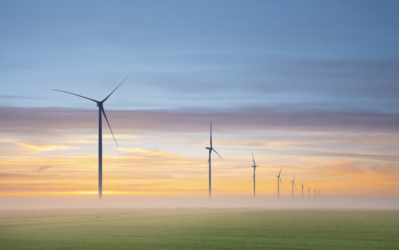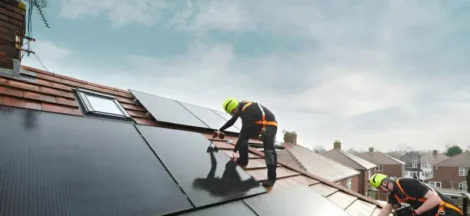Wind power has emerged as a key player in the global transition to renewable energy. With its clean and abundant nature, wind energy offers a sustainable solution to combat climate change and reduce dependence on fossil fuels. However, identifying the ideal locations for wind turbine installations is crucial to maximize energy production and minimize environmental impacts.
In this blog post, we will explore ideal locations for wind turbines, taking into account factors such as wind resources, land availability, and community acceptance.
Coastal areas
Coastal areas are prime locations for wind turbine installations due to their proximity to large bodies of water. The combination of land and sea breezes creates consistent and strong winds that can be harnessed effectively.
Offshore wind farms, located in the shallow waters near the coast, offer significant potential for generating renewable energy on a large scale. By tapping into these coastal winds, we can harness a clean and abundant source of power to meet our growing energy needs.
Offshore sites
Offshore wind farms have gained traction in recent years as technology has advanced, making them a viable option for wind energy production. By placing turbines in open waters, offshore installations can take advantage of powerful and consistent winds that are often stronger than those on land.
These locations not only offer ample space for large-scale wind farms but also minimize potential conflicts with land use and provide an opportunity to generate significant amounts of renewable energy while reducing reliance on fossil fuels.
High-altitude mountain passes
Mountainous regions with high-altitude passes offer a unique advantage for wind turbine installations. These areas experience accelerated wind speeds due to the funneling effect created by the terrain. As the wind passes through mountain gaps and canyons, it gains speed, making it an ideal location for wind farms.
By strategically placing turbines in high-altitude passes, we can capitalize on the increased wind velocities, leading to higher energy production and more efficient use of this renewable resource.
Plains and plateaus
Open plains and elevated plateaus provide vast expanses of land with few obstacles, making them favorable locations for wind turbine installations. These regions often experience steady and consistent winds, which are essential for optimal energy generation.
Harnessing wind power in these areas not only enables the production of clean energy on a large scale but also reduces the environmental impact of power generation. By utilizing the open spaces of plains and plateaus, we can tap into the full potential of wind resources while minimizing disruption to surrounding ecosystems.
Gaps in mountain ranges
Gaps or passes in mountain ranges create wind tunnels that can amplify wind speeds. These locations offer favorable conditions for wind energy development without causing significant disturbances to fragile ecosystems.
By carefully selecting and designing wind farms in these gaps, we can capitalize on the accelerated winds while minimizing the impact on wildlife and habitats. Harnessing the power of wind in these areas presents a harmonious blend of renewable energy production and environmental conservation.
Rural farmland
Rural farmland presents an ideal opportunity for wind turbine installations. These areas often offer large parcels of land and fewer land use conflicts compared to urban regions. By partnering with local landowners, wind energy developers can utilize open farmland to set up wind farms, providing economic benefits to rural communities.
This cooperative approach allows for the sustainable use of agricultural land while simultaneously generating clean energy, contributing to both environmental and socioeconomic development.
Islands and archipelagos
Islands and archipelagos are exposed to strong and consistent winds due to their location in oceanic weather patterns. These regions often rely heavily on imported fossil fuels for their energy needs, making wind turbine installations a viable solution for clean energy production.
By harnessing the power of the surrounding winds, islands can become more self-sufficient and reduce their carbon footprint. Additionally, offshore wind farms near islands can contribute to the resilience of their energy systems, mitigating the risk of supply disruptions and enhancing energy security.
Wind corridors
Wind corridors are geographic regions that experience concentrated wind flow due to specific topographical features. Identifying and utilizing these corridors can maximize the efficiency and productivity of wind turbine installations. These corridors can be found in various locations, such as narrow valleys, canyons, or areas between mountain ranges.
By strategically placing turbines in these wind corridors, we can optimize energy generation while minimizing the environmental impact. This targeted approach ensures that we make the most of our wind resources while respecting the natural landscape.
Conclusion
Selecting ideal locations for wind turbine installations is crucial to harnessing wind energy effectively and sustainably. By considering factors such as wind resources, land availability, and community acceptance, we can maximize renewable energy production while minimizing environmental impacts. These ideal locations provide a starting point for developing wind farms that contribute to a greener and more sustainable future.




 Trending Olive branch tattoos idea in 2023
Trending Olive branch tattoos idea in 2023